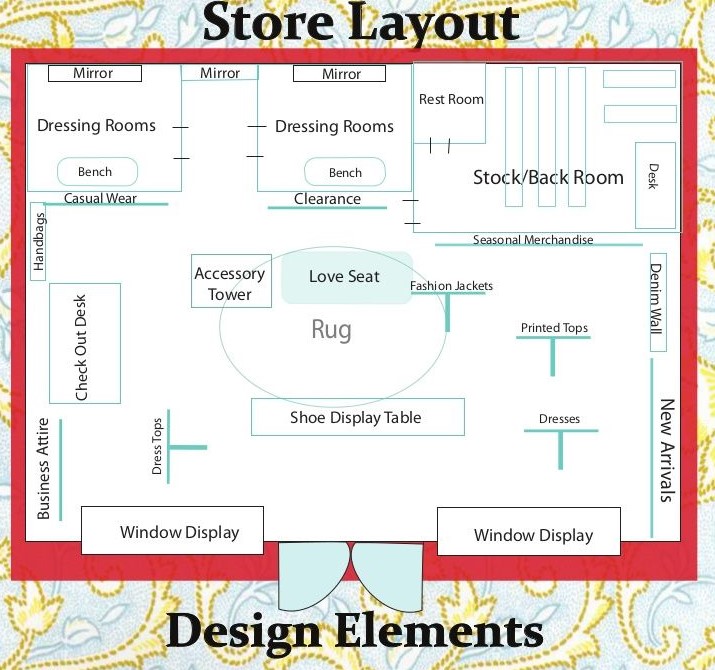Store Layout
The type of store usually dictates the floor- and shelf layout. For example, grocery stores should have enough aisle space for shoppers to move their carts and accompanying toddlers around when they are doing their shopping. Retailers may often move items to the front of the shelves to avoid giving the impression of not having enough items on stock. Retail managers may use the sales-per-square-meter metric, which is the ratio of sales to total shelf and floor display space, to assess the effectiveness of a merchandising strategy and make the necessary adjustments.

Selling space is the most important part of a store and therefore, efforts to utilise each square meter will help to maximise sales. One proven way to do this is through interior displays that effectively show merchandise to the customer. When planning interior displays, remember that the theme and image presented on the exterior must be carried throughout the interior of the store to provide consistency for the customer.
The purpose of interior display is to develop desire for the merchandise, show what is available, and encourage both impulse and planned purchasing.
Three major goals of a store should be to:
- Motivate the customer to spend money,
- Project the image of the store, and
- Keep expenses to a minimum.
Promotion and advertising money are less-effective, or even wasted, when efforts are not made within the store to effectively merchandise the products. Well-designed displays and in-store promotions are essential for a consistent theme and to help the customer find advertised items.
Planning Your Store Layout
As an illustration, researchers found that 64.8% of all purchase decisions were made inside a supermarket. This included impulse purchases along with substitutions and planned buys where the shopper had an item in mind, but no brand. Most people indicated that they purchased the item because they saw it displayed.
Some effective displays are created by suppliers or brand-name manufacturers, while others are developed from scratch. The main principles of design used in display are balance, emphasis, proportion, rhythm, colour, lighting, and harmony. These principles apply to all displays – window and interior.
Choosing your floorplan is important. Think of your floorplan as the foundation of your store layout. It gives you a structure through which to understand and organise everything else.
The retailer must plan everything well; the location of the shelves or shelves to display the merchandise, the position of the mannequins, or the cash counter, and so on.
Click here to download a handout that indicate the different floor plan types.